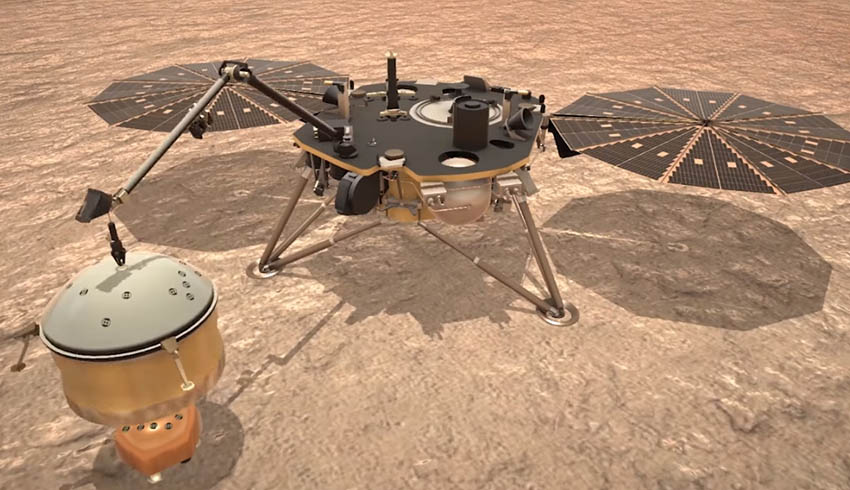Part of an instrument called the Heat Flow and Physical Properties Package (HP3), the mole is a self-hammering spike designed to dig as much as 16 feet (five metres) below the surface and record temperature.
But the mole hasn't been able to dig deeper than about 12 inches (30 centimetres) below the Martian surface since 28 February 2019. The device's support structure blocks the lander's cameras from viewing the mole, so the team plans to use InSight's robotic arm to lift the structure out of the way.
Depending on what they see, the team might use InSight's robotic arm to help the mole further later this summer.
HP3 is one of InSight's several experiments, all of which are designed to give scientists their first look at the deep interior of the Red Planet. InSight also includes a seismometer that recently recorded its first marsquake on 6 April 2019, followed by its largest seismic signal to date at 7:23pm PDT (10:23 EDT) on 22 May 2019 – what is believed to be a marsquake of magnitude 3.0.
Lori Glaze, director of NASA's planetary science division, said, "Engineers at JPL [NASA's Jet Propulsion Laboratory] and DLR [the German Aerospace Center] have been working hard to assess the problem. Moving the support structure will help them gather more information and try at least one possible solution."
For the last several months, testing and analysis have been conducted at JPL in Pasadena, California, which leads the InSight mission, and DLR, which provided HP3, to understand what is preventing the mole from digging.
Team members now believe the most likely cause is an unexpected lack of friction in the soil around InSight – something very different from soil seen on other parts of Mars. The mole is designed so that loose soil flows around it, adding friction that works against its recoil, allowing it to dig. Without enough friction, it will bounce in place.
The lifting sequence will begin in late June, with the arm grasping the support structure (InSight conducted some test movements recently). Over the course of a week, the arm will lift the structure in three steps, taking images and returning them so that engineers can make sure the mole isn't being pulled out of the ground while the structure is moved. If removed from the soil, the mole can't go back in.
HP3 principal investigator Tilman Spohn of DLR said, "Moving the support structure will give the team a better idea of what's happening. But it could also let us test a possible solution. We plan to use InSight's robotic arm to press on the ground. Our calculations have shown this should add friction to the soil near the mole."

